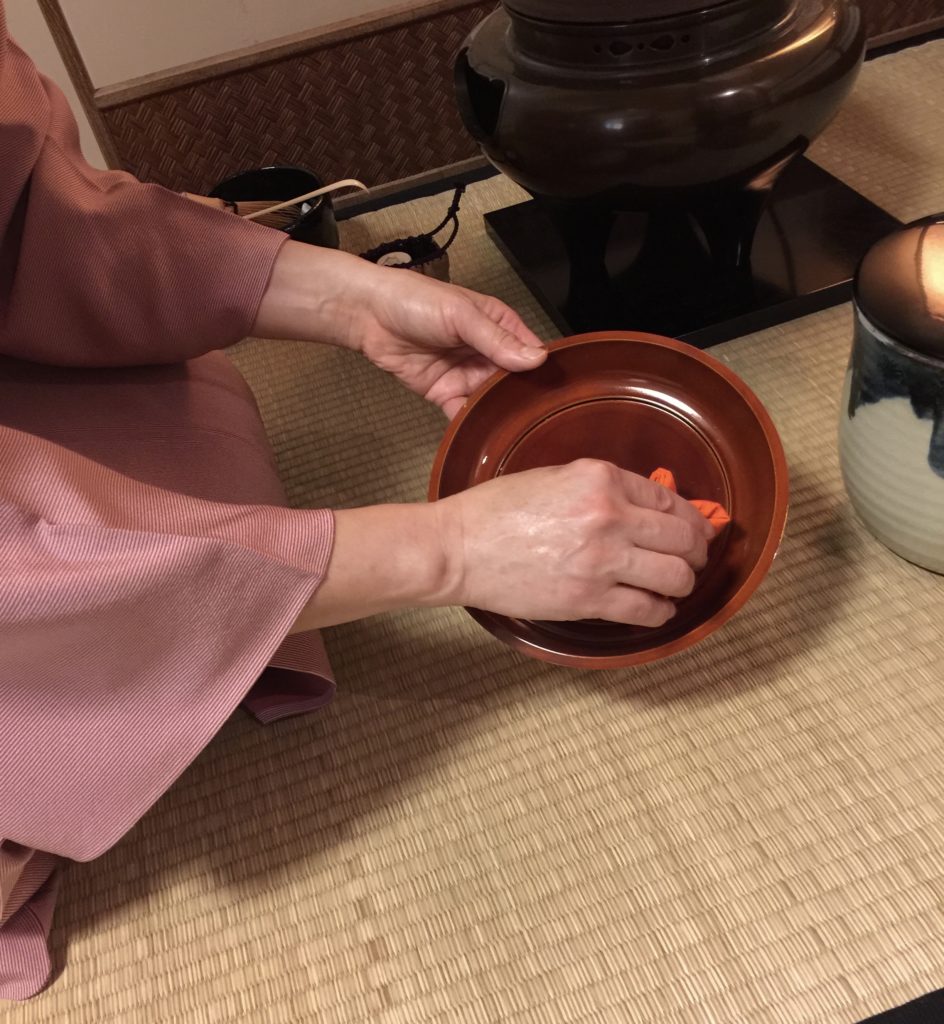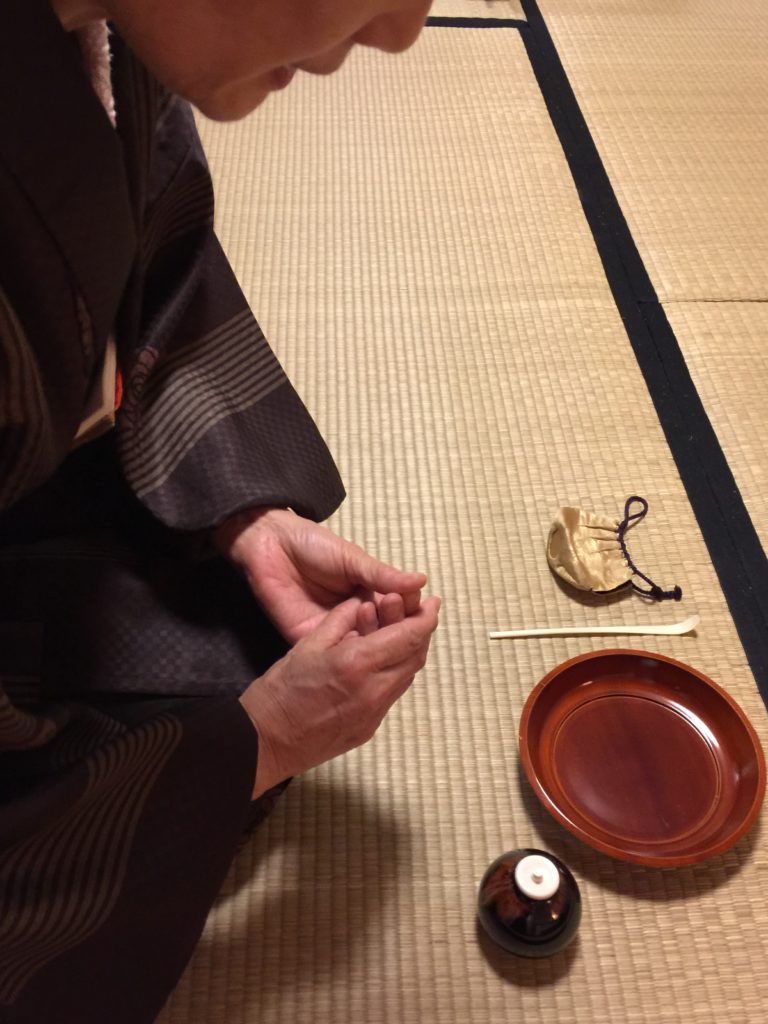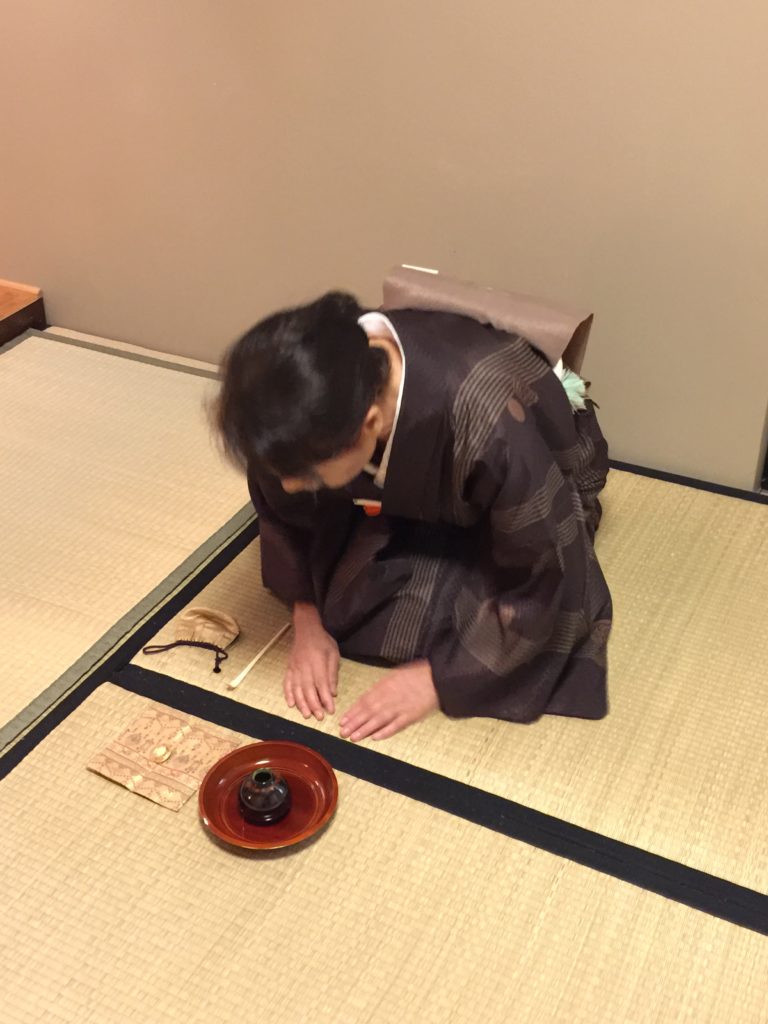四ヶ伝のうちの一つ『盆点』のお稽古をしています。
盆点のお点前には、1)お盆 2)唐物茶入れとお仕覆 3)曲水指(杉の木を薄くして作った水指) 4)茶杓は象牙 5)黒楽茶碗を使用します。
使用するお盆は真塗で四方盆、丸盆、五角盆、菱盆の4種類があり、清め方がそれぞれ盆の形で異なります。
盆点のお稽古をする際は四方盆から始めるのが基本ですが、これも調達が間に合いませんでしたので、色も形も材質も盆点用の丸盆に似ている所有の丸い菓子盆を代用しました。
This week, we practiced bondate, one of the shikaden procedures.
With this procedure, we use the following tools:
1) bon (tray)
2) karamono (Chinese tea container) and oshifuku (silk pouch holding a tea caddy)
3) mage mizusashi
4) ivory chashaku
5) kuroraku chawan (hand-moulded black tea bowl)
There are four different shapes of trays to accompany chaire. They are yohoubon (square), marubon (round), gokakubon (pentagon), hishibon (diamond). The way to clean each tray is different based on the shape of the tray used.Usually yohoubon is the first tray precedure to learn, but we started to learn bondate with marubon since we didn’t have yohoubon. Also because we don’t have marubon in St. Louis, we used a round cake tray as a substitute that looks like marubon in shape and color.

仕覆を脱がせた後の茶入れを盆から取り出す時、盆の上に返す時に、手を清める意味で『もみ手』を3回するのが、新しくこのお点前を習う生徒さんたちにとっては物珍しく新鮮に感じたようです。There is a unique move in this bondate procedure. Before we take out the chaire from tray, or before we return it to the tray, we do “momite” (rub your palms together three times in front of chaire ). For some students this gesture is very intriguing and somewhat funny.

茶入れを拝見する際は、古帛紗を取り出し、その上に茶入れの蓋、茶入れをおいて、拝見するのも唐物の時と同じです。
For viewing chaire, we use kobukusa to display chaire and its cap on the kobukusa, just like other karamono procedure.

勿論、ふすまの開け閉め、拝見物を出す時は指の第2関節まで畳につける行の手の扱いです。こうして四ヶ伝 の点前を3種類お稽古してくると、行の手をつく、袱紗を真や行にたたむなど、大分慣れてきています。お稽古をこつこつと繰り返すことの大切さを感じます。もうすぐ、曲水指を調達できそうです!それまでは塗蓋の水指を使用しています。。。
For most shikaden procedures, we need to do in gyo style (both fingers touching tatami mat up to the second joints) when opening and closing fusuma door and putting tools on tatami for haiken. The last three shikaden procedures, we get used to folding fukusa in shin and gyo style, also doing in gyo style. We master these styles just by practicing many times. Some day we will realize that our hands and body remember the movement without thinking. That’s the important part of practicing tea ceremony, and also a pleasure of learning. We have been creative substituting mage with our regular mizusashi. But, finally we are getting our first mage mizusashi from Japan and we can’t wait to practice using a proper one.